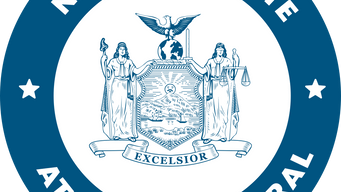This article is written in collaboration with Francesca Ellena
INTRODUCTION
On 23 April 2024, the Italian Council of Ministers approved a bill on Artificial Intelligence. The official copy of the bill presented to the Senate on 20 May 2024 has been published on the Senate website.[1] The bill – with only 26 articles – covers various areas of interest, such as the allocation of public funds for investments in the AI sector, the use of AI in public administration, healthcare, the judiciary and white-collar professions, data protection and copyright. The bill will have to be debated and approved by the Italian Parliament, which may make changes to the text, meaning that it is not yet final.
THE BILL AT A GLANCE
The bill covers a wide range of areas and is mainly aimed at anticipating the entry into force in Italy of some provisions of the European AI Act. In fact, the bill entrusts the government with the implementation of the AI law and borrows some principles from it, as well as the definition of artificial intelligence itself. The main points of the bill are:
- general principles (arts. 1-6). The bill stipulates that AI must respect the fundamental freedoms and rights provided for by the Italian Constitution and European Union law, and in particular the principles of transparency, proportionality, security, protection of personal data, confidentiality, accuracy, non-discrimination, gender equality and sustainability. Human beings must be at the center of AI development: indeed, the draft law states that AI must be developed and implemented with respect for human autonomy and decision-making. Within this set of principles, there is one implementing provision: the consent of parents of children under the age of fourteen must be obtained in order for them to have access to AI systems or solutions.
- rules for AI in specific fields (arts. 7- 16). The bill sets out general provisions that underpin the use of AI in various sectors, namely: (i) healthcare – e.g. AI can be used in healthcare, but final decisions on therapies, prevention and diagnosis must be made by human healthcare professionals; (ii) employment – e.g. the implementation of AI in the employment relationship must not compromise the principles of gender equality and non-discrimination, and an oversight body (“osservatorio“) for AI in the workplace should be established at the Ministry of Labor; (iii) white-collar professions – e.g. AI should support white-collar professions, but should not replace human intellectual work; (iv) public administration – e.g. PA should make responsible use of AI to increase efficiency, implement measures to enable AI users to develop skills in dealing with AI; (v) justice – e.g. AI can be used in legal research, organization of offices, provided that the interpretation of laws and orders is performed by a human judge;
- governance (art. 18). This part is in execution of art. 70 of the AI Act when it designates the Italian Digital Agency (“Agenzia per l’Italia Digitale“) and the Italian Cybersecurity Authority (“Agenzia per la Cybersicurezza nazionale“) as the national competent authorities for AI. The former would be responsible for the notification, assessment, appointment and supervision of bodies responsible for verifying the compliance of artificial intelligence systems. The latter would be responsible for market surveillance, including inspection and sanctioning of AI systems. This division of responsibilities does not affect the powers of the Italian Data Protection Authority;
- proxy to the Government (art. 22). The bill allows the government to adopt laws to implement the AI Act in Italy in accordance with the principles set out in the bill. In particular, the bill provides that the law shall provide for civil, administrative and criminal law instruments, including precautionary measures, aimed at preventing the distribution of unlawfully generated content, including by means of artificial intelligence systems, supported by sanctions. The law shall also establish criminal offences (and indeed a new set of offences related to the use of AI is provided for in art. 25 of the bill, the offence of “unlawful distribution of content generated or modified using AI”, which directly addresses deep-fake scenarios);
- AI content labelling (art. 23). AI content shall be recognizable as such (e.g. media content disseminated through any means generated by AI shall be marked/announced as such). The bill envisages amendments to legislative decree no. 208/2021 to include such provisions aimed at achieving this purpose.
COPYRIGHT AND AI
Finally, the bill contains some relevant copyright provisions (art. 24), which envisage amendments to the Italian copyright law.[2] It is noteworthy that the bill proposes that:
- works created by using AI are included among copyright-protected works, provided that such works are a result of creative work of the [human] author”;
- extraction of copyright work through AI Systems (including GenAi) – i.e. scraping – is allowed provided that such extraction complies with the already envisaged TDM exceptions (art. 70-ter and 70-quater of copyright law).
The bill did not provide further details; as always, it will be up to those interpreting the law to define the boundaries of the new provisions such as the content and amount of human effort required to meet the threshold of creativity in the generation of a work created with the help of AI, or such as the proper way for copyright owners to opt out of scraping.
[1] Under no. 1146
[2] Law no. 633/1941





